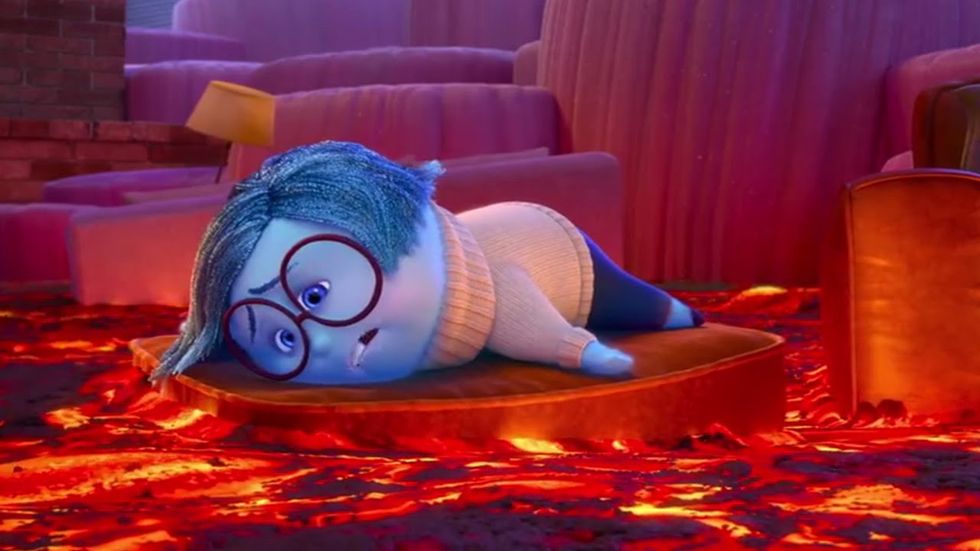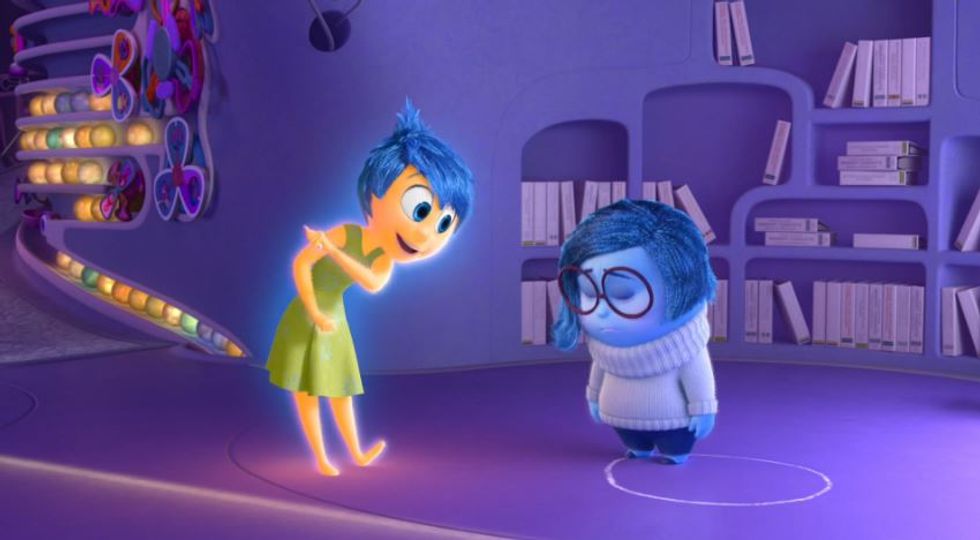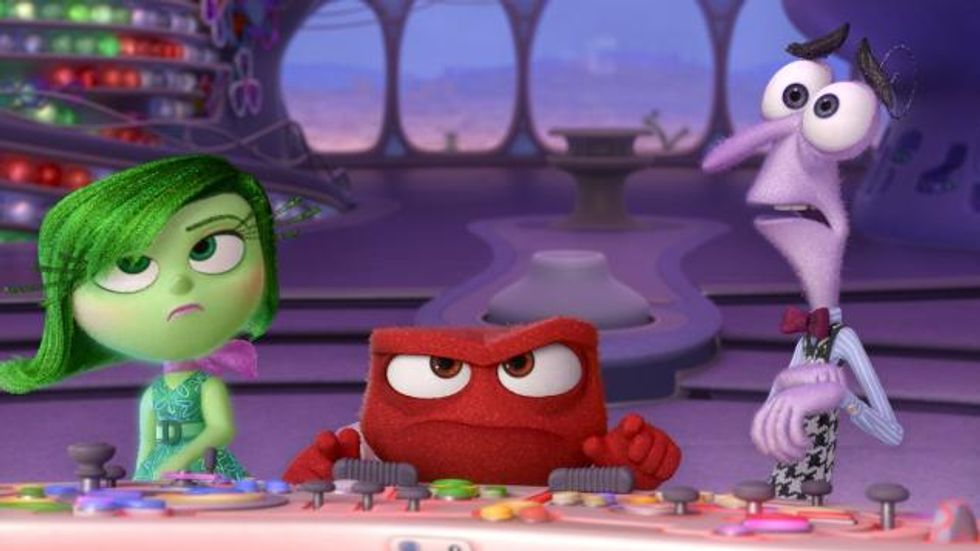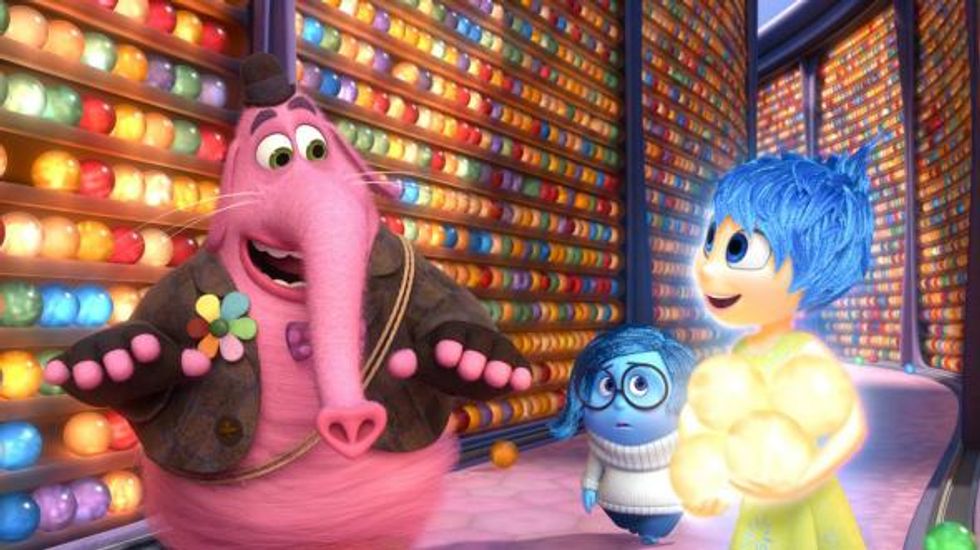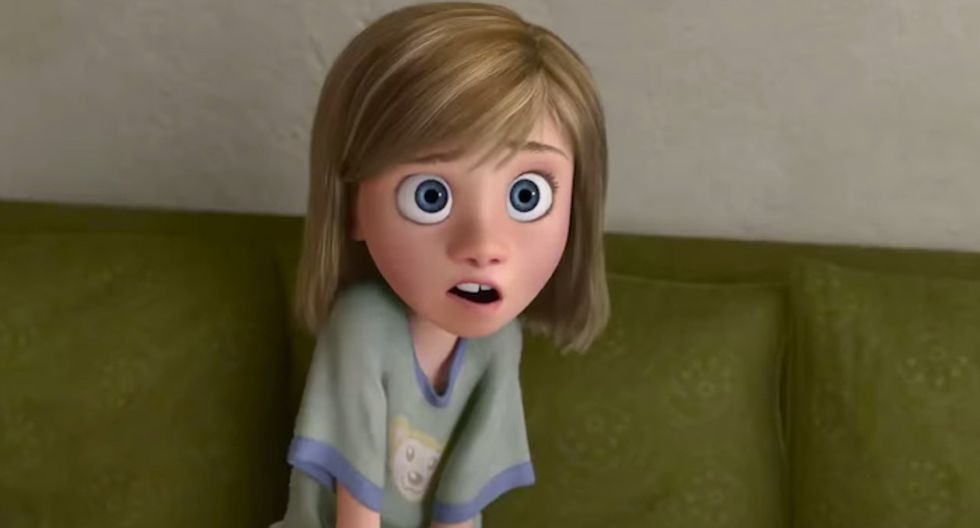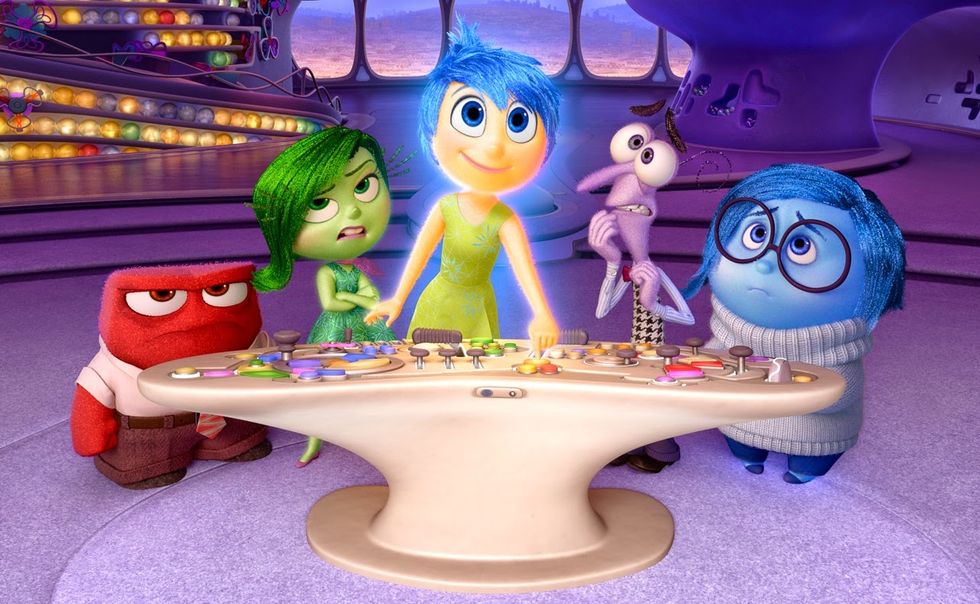*Warning: Potential Spoilers*
Pixar has done it again: it has created a brilliant, animated movie that transcends generations and appeals to the brains and hearts of literally everyone. "Inside Out" is everything we've been waiting for and more, as it cleverly relays important messages about life, humanity, feelings, and the way that we treat each other. Through colorful little brain-people and the 11 year-old girl they live in, here's what "Inside Out" flawlessly teaches us about what it means to live:
1. It is absolutely okay to feel sad.
Sadness promotes comfort, which promotes connection, which promotes healing. If Sadness was not a part of Riley's life, she ultimately could not feel Joy. Joy, in the movie, must learn that in order for someone to be happy, they must also feel the Sadness inside them. Cliches like, "There can be no rainbows without a little rain," obviously come out of some sort of truth, as Pixar reminds us. Sadness ultimately begins the story as the annoying nuisance who keeps ruining Riley's memories, but becomes the real hero of the film in the end. Everyone should know that Sadness is not something to cover up; it is something to embrace.
2. No one can be 100% happy all the time.
This is a crucial lesson in the film and interchangeable with the idea "It is okay to feel sad." Riley, in her early years, had always been her parents' "Happy Girl," but felt pressure when she couldn't fulfill that title any longer. The core of the problems in the movie (Sadness turning the core memories sad, Joy getting sucked up into the tube, the "islands" of memory collapsing) all stem from Joy's obsession with making all of Riley's memories joyous. She learns, however, that pushing people to feel Joy actually does the opposite. You have to let people overcome their own sadness in order to let the Joy shine through.
3. You can't let Anger, Fear, and Disgust control your life. 
Although all of these emotions are essential to all human life, allowing them to take over can result in utter chaos. While Sadness and Joy were away from "Control" in the movie, the other emotions took matters into their own hands. Anger, Disgust, and Fear caused Riley to act in a way that was totally out of character (lashing out at her parents, forgetting her goofy side, etc.) I'm sure we've all wondered what happened in the life of that guy flipping you off on the highway to make him so angry, or what's going on inside the head of the teenage girl who can do nothing but roll her eyes in disgust. These people have allowed their positive emotions to "get lost" in their subconscious or in their memory and alongside that, "Inside Out" shares the perils that come with letting Disgust, Anger, or Fear dominate your brain for too long.
4. Empathy is extremely important.
This past semester, I took a seminar class that discussed empathy and the importance of this emotion in today's society. We have almost completely lost our ability to step inside the shoes of someone else and say, "I understand how you feel." Empathy was displayed brilliantly in "Inside Out" when Sadness sat beside the sobbing Bing Bong and told him that she felt what he was feeling. Even though Bing Bong was an imaginary friend who cried tears of candy (mmmm, caramel), this scene was still an excellent example of how to actually comfort someone when they're feeling sad. You can't just tell some who is sad to "think positively" and expect them to stop crying; empathy works much better than forcing happiness upon others.
5. Middle School really is a confusing time for everyone.
Think of your best middle school memory. Now think of your worst. Which was easier? Let's face it, middle school is an awkward time for everyone. It's a time when abstract thought collides with our subconscious, and our emotions struggle to keep up. Just like when Joy and Sadness set out to free Bing Bong from the scary clown locked away in Riley's subconscious, or when they move through the world of imagination to catch the "train of thought." Kids never really understand what's going on in that brain of theirs, and neither does anyone else.
6. All emotions have equal value and significance. 
We hold these truths to be self-evident, that all emotions are created equal. You must allow yourself to feel every emotion: be it fear or disgust or even anger. Without the negative emotions, the positive emotions have no real worth. As you grow older, you learn that all emotions (good or bad) contribute to your ability to exist as a well-rounded human being. Riley's emotions constantly argued and never seemed to come to a consensus about how to help Riley get through life. On the other hand, when the adults' emotions were shown in the film, they all seemed to have a common goal and had no trouble working together. Pixar uses this to show that as you grow older, you tend to learn how to foster the growth of not only your "positive" emotions like joy and gratitude and excitement, but also the "negative" emotions of grief and anxiety and animosity. If you never learn to acknowledge the different emotions inside, one type of emotion has the ability to take over your "control board" and eventually cloud your perspective of life outside.
If you haven't seen "Inside Out" yet, you are severely missing out on a good cry/laugh session. This insanely intelligent film masterfully brings about what it means to be the emotionally intelligent creatures that we are. Let's all make a pact to stop condemning certain emotions and to instead welcome all types of feelings with open arms. When we allow ourselves to feel all of our feelings, we create a healthy environment for our brains (and hearts) to become well-adjusted in a world and society that is anything but. So, go out and appreciate all of your emotions, and remember to never give up your Brazilian helicopter pilot, "just in case!"
(images via PixarPost.com)


